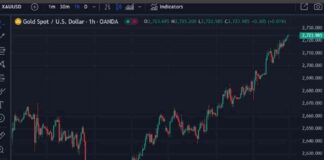Private Credit: The Evolution and Future Prospects
The landscape of leveraged finance has undergone significant transformations over the years, with private credit emerging as a major player in recent times. The history of leveraged finance can be categorized into three distinct acts, each marked by its own set of challenges and opportunities.
Act One: The Rise and Fall of High-Yield Bonds
The first act of leveraged finance was characterized by the dominance of high-yield bonds, also known as “junk” bonds. This era came to an abrupt end in 1990 when Michael Milken, a key figure in the high-yield bond market, was convicted of fraud and sent to prison. The fallout from Milken’s scandal had far-reaching implications for the high-yield bond market, leading to a period of uncertainty and instability.
Act Two: The Era of Private Equity and Leveraged Loans
The second act of leveraged finance witnessed the explosive growth of private equity, fueled by a combination of junk bonds and leveraged loans. Leveraged loans, which require companies to pay a floating rate of interest, became increasingly popular as a means of financing leveraged buyouts and other corporate transactions. This period saw a surge in private equity investments, as firms capitalized on the availability of cheap debt to fund their acquisitions.
Act Three: The Rise of Private Credit
In recent years, private credit has emerged as the third wave of money in the leveraged finance market. Private-credit investors, often affiliated with private-equity funds, have raised more than $1 trillion since 2020. With banks tightening their lending standards and interest rates on the rise, private credit has become the go-to source of financing for many companies. Wall Street pundits have hailed this shift as the beginning of a “golden age” for private credit.
Challenges and Opportunities in Private Credit
While private credit has enjoyed a period of unprecedented growth, there are signs that the golden age may be coming to an end. The increasing competition among private-credit investors has led to a compression of yields, making it harder for firms to generate attractive returns. Moreover, the proliferation of covenant-lite loans and other risky debt structures has raised concerns about the sustainability of the private credit market.
Despite these challenges, there are still ample opportunities for savvy investors in the private credit space. By focusing on niche markets, conducting thorough due diligence, and maintaining discipline in underwriting standards, investors can navigate the complexities of the private credit market and achieve attractive risk-adjusted returns.
The Future of Private Credit: A New Chapter
As the private credit market continues to evolve, it is clear that we are entering a new chapter in the history of leveraged finance. With the traditional sources of financing becoming increasingly constrained, private credit is poised to play a pivotal role in fueling economic growth and innovation. However, the industry must remain vigilant in addressing the risks and challenges that come with this rapid expansion.
Regulatory Landscape: Navigating the Compliance Challenges
One of the key considerations for private-credit investors is the evolving regulatory landscape. As regulators scrutinize the activities of non-bank lenders, firms must ensure compliance with a complex web of regulations and reporting requirements. Failure to adhere to these regulations can result in hefty fines, reputational damage, and even legal action. It is imperative for private-credit investors to stay abreast of the latest regulatory developments and implement robust compliance programs to mitigate regulatory risks.
Market Trends: Riding the Wave of Innovation
Innovation is the name of the game in the private credit market, as firms seek to differentiate themselves and capture new opportunities. From the rise of direct lending platforms to the emergence of structured credit products, the market is constantly evolving to meet the changing needs of borrowers and investors. By staying ahead of the curve and embracing new technologies, private-credit investors can position themselves for success in an increasingly competitive market.
Global Outlook: Seizing Opportunities in Emerging Markets
The private credit market is not limited to a single geography, with opportunities abound in emerging markets around the world. From Latin America to Asia, investors can tap into the growing demand for alternative sources of financing in developing economies. By expanding their footprint and diversifying their portfolios, private-credit investors can capture the potential upside of investing in high-growth markets while managing the inherent risks.
Conclusion
The golden age of private credit may be coming to an end, but the future remains bright for investors who are willing to adapt to the changing dynamics of the market. By staying vigilant, embracing innovation, and seizing opportunities in emerging markets, private-credit investors can continue to thrive in a challenging and competitive environment. As the industry enters a new chapter, the key to success lies in strategic positioning, prudent risk management, and a relentless commitment to excellence.

















